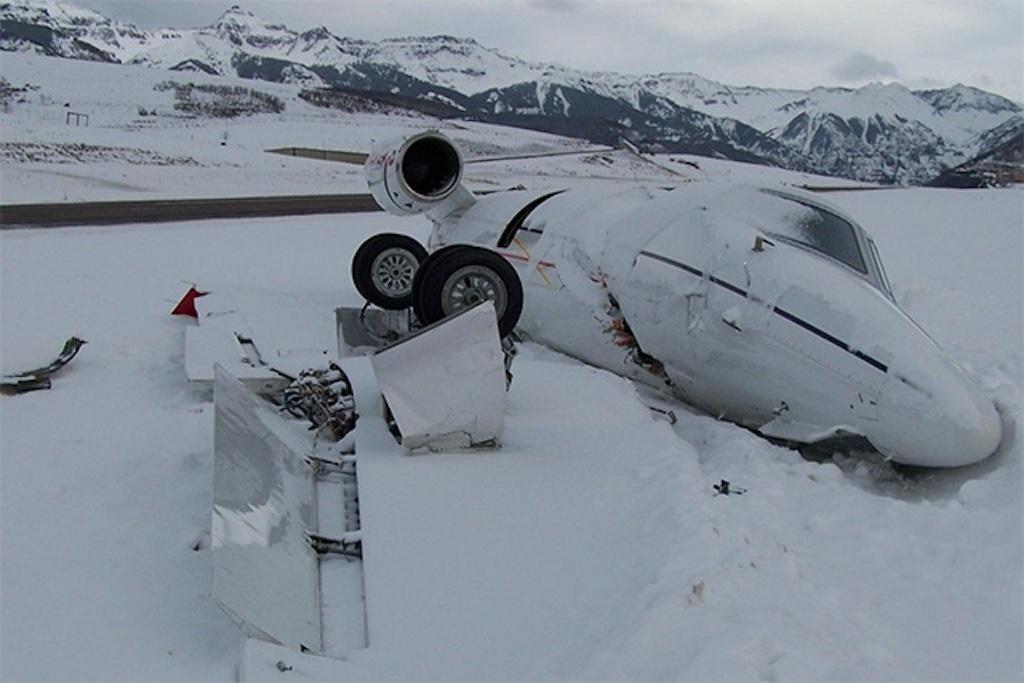
PM: “Five-hundred feet, stable.”
PF: “Really?”
PM: (Silence)
PF (10 sec. later): “Landing.”
If the NTSB had examined the cockpit voice recorder (CVR), those would have been the only words exchanged between the pilot monitoring (PM) and the pilot flying (PF) between 500 ft. AGL and the PM’s first callout once they were on the runway. If the NTSB also looked at the flight data recorder (FDR), they would have noted that the aircraft was fully configured, on extended centerline, on a 3-deg. glidepath, on speed and at 30 deg. of bank.
Of course, the NTSB never looked at this incident because the results were an otherwise uneventful landing. But had an inquiry taken place, investigators would also have noted that both pilots were highly experienced, with over 20,000 hr. and 70 years of flight experience between them. Both were highly proficient, though only the PF had more than 100 hr. in type. The aircraft was less than a year old. In fact, the aircraft, a Gulfstream GVII-G500, had only been type certificated the previous year.
Human factors specialists also would have noted that the PF was the flight department’s director of aviation, and the PM was the director of safety. Oh yes, there is one more pertinent point. I was the PF.
We Have A Problem
I first heard the term “stabilized approach” in 1998, when the Flight Safety Foundation produced its exceptionally well-done Approach and Landing Accident Reduction (ALAR) toolkit. I am sure the concept had been around before that, but this was my introduction to the idea. ALAR Briefing Note 7.1 established a few concepts that changed the way most of us fly:
- Approaches must be stabilized no later than a “minimum stabilization height” of 1,000 ft. above airport elevation in instrument meteorological conditions (IMC) or 500 ft. above airport elevation in visual meteorological conditions (VMC).
- Any deviations at minimum stabilization height and below should be called out by the PM.
- Any time an approach is not stabilized at the minimum stabilization height or becomes unstabilized below the minimum stabilization height, a go-around must be conducted.
The ALAR toolkit also recommended criteria for judging what is and what isn’t considered stabilized. There are nine items on the list (see “The Recommended Elements of a Stabilized Approach,” below), but I’ve come to think of them as these:
- The aircraft is fully configured, and all checklists are completed.
- The aircraft is on extended centerline and on the correct glidepath, with only small changes in heading and pitch needed to maintain the correct flight path.
- The aircraft is on speed, no slower than Vref or faster than Vref+20.
- The aircraft sink rate is no greater than 1,000 fpm and the power setting is appropriate for the configuration.
The rationale behind the stabilized approach idea is unquestioned. The ALAR study found that unstabilized approaches were a causal factor in 66% of 76 approach and landing accidents and serious incidents worldwide from 1984 through 1997. We, as an industry, have taken notice. The “500 ft., stable” callout has become almost automatic. As the recounting of my experience last year already noted, the callout has become automatic even if the approach isn’t necessarily “really?” stable. Was that “really?” stable callout an isolated incident or is the problem that many of us are not practicing what we preach?
In 2017, the Flight Safety Foundation released a study it conducted with The Presage Group, called the “Go-Around Decision-Making and Execution Project.” Their analysis of accident data between 1994 and 2010 revealed that, “Unstable approaches occur on 3.5-4.0% of all approaches, and 95-97% of flight crews whose airplanes are in this state continue the approach to landing.” Clearly, very few pilots are following their own standard operating procedures (SOPs) and are not going around from unstable approaches.
Why Are Flight Crews Disregarding SOPs?

If 95-97% of flight crews are failing to go around when their SOPs tell them to, we have a problem with the crews, the SOPs, or both. Too many of us find ourselves in unstable approaches and believe, “I can save this.” The fact that we almost always do reinforces our decision to deviate from our stable approach guidelines. The 2017 Flight Safety Foundation study explored the human factors behind our noncompliance; some of these may apply to you.
(1) Passenger or company complaints. Some pilots may fear the consequences of going around from an approach in the form of passenger complaints or questions from their employers. I think this might be true for some, but for most of us in business aviation it may be truer to say we have a fear of letting our passengers down. In the last several years I’ve gone missed approach for weather twice and a third time because it appeared the winds would be too gusty to handle. In each of those cases if we got any questions at all, the passengers expressed their appreciation for us keeping them safe.
(2) Lack of crew support: Another cited reason is fear the rest of the crew will not be supportive. I’ve never seen this personally, but there are several accident case studies that bear this out. This dynamic can be especially problematic for business aviation crews, where the more senior pilot could be in the PM role.
On Jan. 3, 2009, a crew flying a Learjet 45XR without passengers to Telluride Regional Airport (KTEX), Colorado, did manage to go missed approach when called for. The PM in the right seat was also the pilot in command. After going missed approach a second time, the PM said, “I mean we could almost circle and do it. Wanna try?” The PF said, “I don’t,” and then sighed, realizing the PIC would insist that they do. They didn’t make it. Both pilots survived but the aircraft was destroyed.

In Part 2, we’ll continue our discussion of why pilots fail to go around when their SOPs tell them to.





